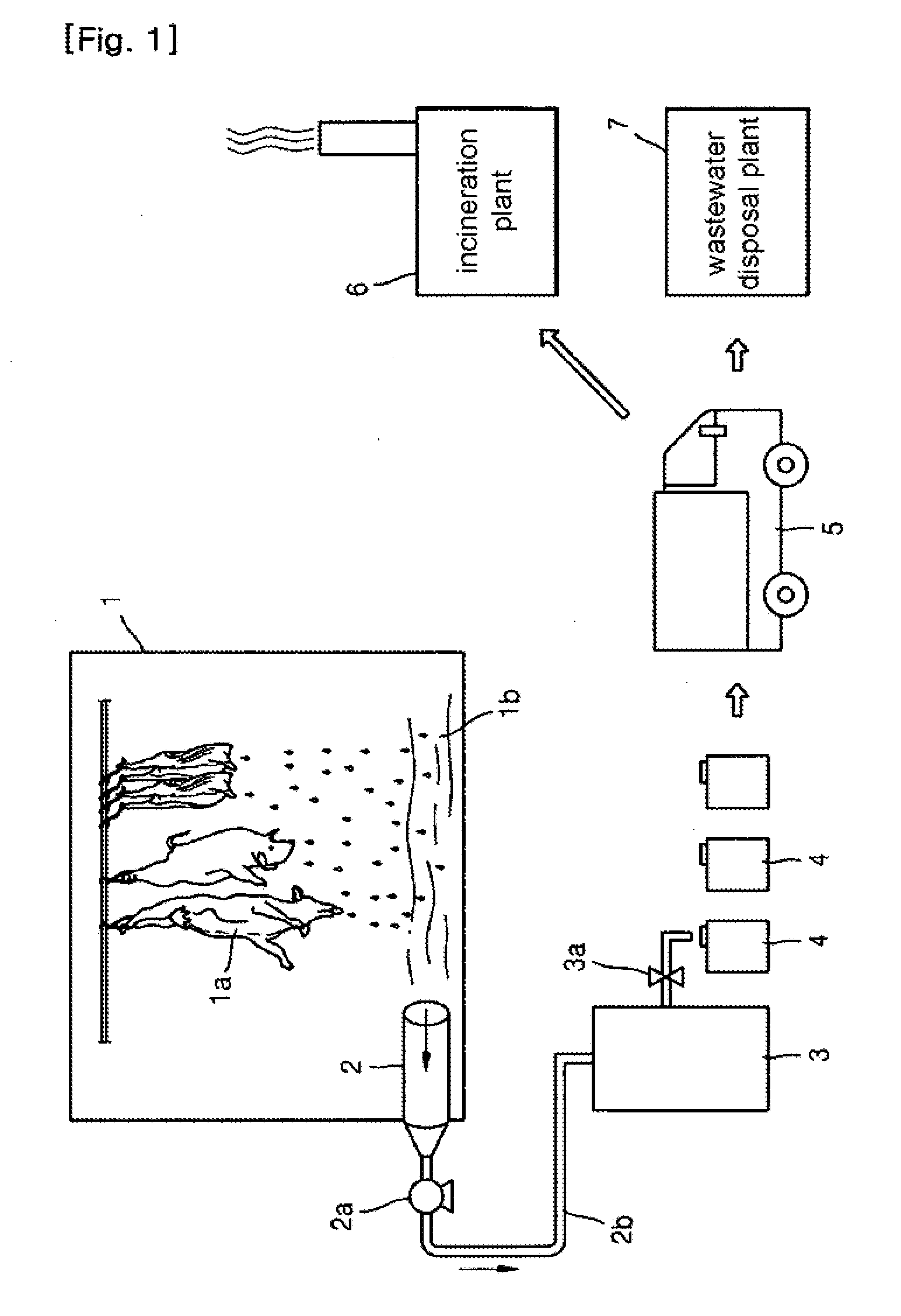System for Treating Blood of Slaughtered Animals and Method for Producing High-Quality Amino Acid Solution Using Blood of Slaughtered Animals
a technology for slaughtered animals and blood, which is applied in the field of system for treating a method for producing high-quality amino acid solutions using the blood of slaughtered animals, can solve the problems of wasting valuable resources, wasting domestic blood rich in nutrients, and increasing the problem of domestic blood treatment in slaughter plants
- Summary
- Abstract
- Description
- Claims
- Application Information
AI Technical Summary
Benefits of technology
Problems solved by technology
Method used
Image
Examples
Embodiment Construction
[0031]Hereinafter, the construction and effect of a system for treating the blood of slaughtered animals according to the present invention and a method of producing a high-quality amino acid solution from the blood of slaughtered animals will be described in detail with reference to the accompanying drawings. In FIGS. 2 to 4 illustrating the present invention, the same reference numerals are used for the same elements as those in the prior art (FIG. 1).
[0032]FIG. 2 shows a system 10 for treating the blood of slaughtered animals according to the present invention. Referring to FIG. 2, in the inventive system 10 for treating the blood of slaughtered animals, an animal blood flowing out from a slaughter plant 1 is collected through a blood collection pipe 2, and then temporarily stored in a blood storage tank 3. Because the animal blood should not be spoiled, it should be transferred from the slaughter plant in a cold state and stored in the blood storage tank in a cold state. The ani...
PUM
| Property | Measurement | Unit |
|---|---|---|
| Temperature | aaaaa | aaaaa |
| Fraction | aaaaa | aaaaa |
| Time | aaaaa | aaaaa |
Abstract
Description
Claims
Application Information
 Login to View More
Login to View More - R&D
- Intellectual Property
- Life Sciences
- Materials
- Tech Scout
- Unparalleled Data Quality
- Higher Quality Content
- 60% Fewer Hallucinations
Browse by: Latest US Patents, China's latest patents, Technical Efficacy Thesaurus, Application Domain, Technology Topic, Popular Technical Reports.
© 2025 PatSnap. All rights reserved.Legal|Privacy policy|Modern Slavery Act Transparency Statement|Sitemap|About US| Contact US: help@patsnap.com



